An exhibition of eleven works by the late painter, arts organizer, and mythic personality Samson Mnisi focused on what might be called his spiritual abstraction, which decenters the discrete object. Rainmaker celebrated a specifically African interrogation of abstraction, writes Setumo-Thebe Mohlomi.
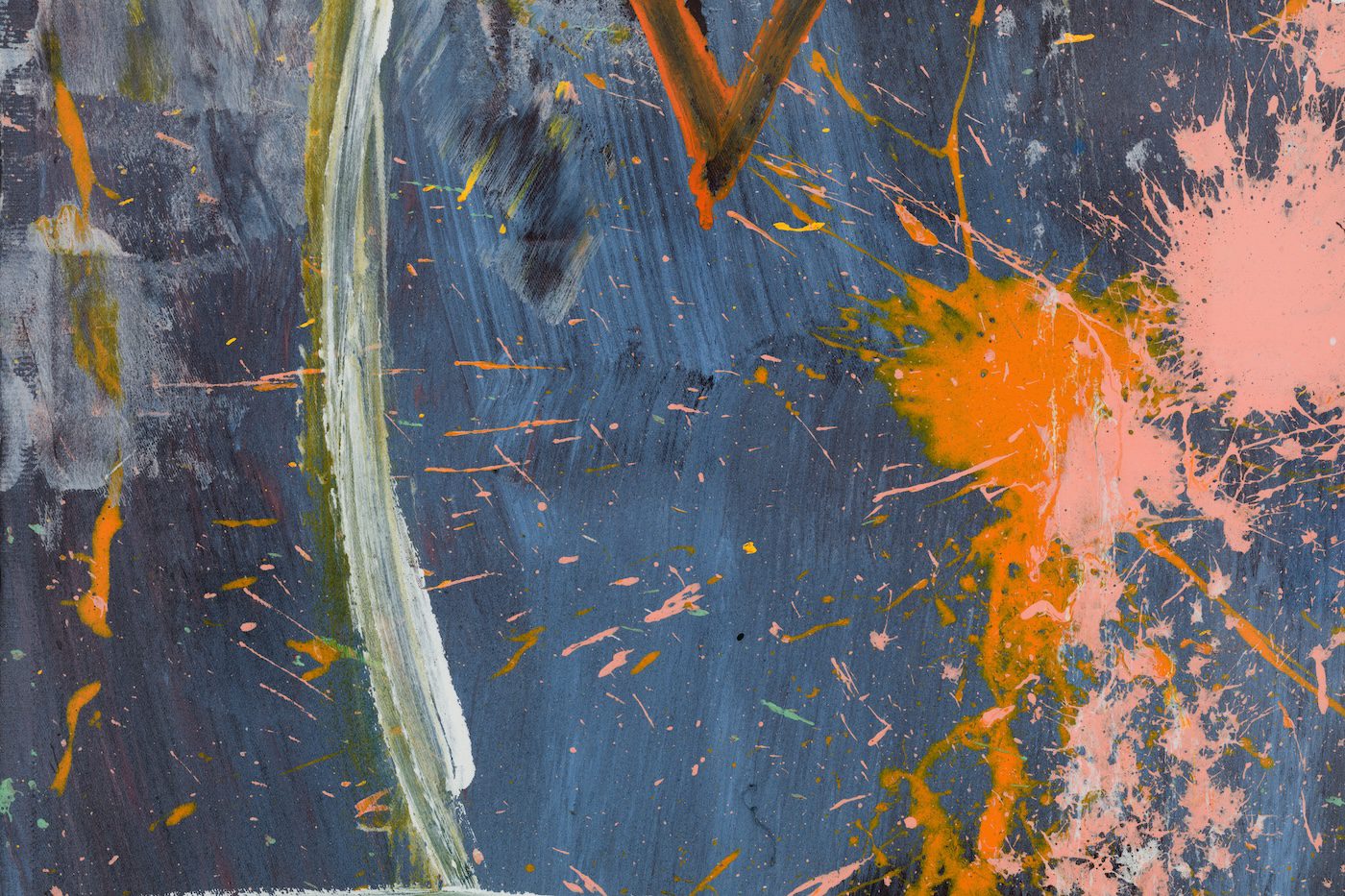
Samson Mnisi, Arreola II, XXX, Mixed Media, 179.6 x 86 cm. Detail. Artworks © Artist. Photo © Vela Projects (Mia Thom).
Rainmaker, the title of a recent exhibition of Samson Mnisi’s works at Vela Projects in Cape Town’s city center, is a linguistic and thematic play on the late, great South African visual artist’s name. In the isiZulu language indigenous to South Africa, “mnisi” means “rainmaker” and both were used as affectionate terms for the artist by friends and acquaintances. The thematic significance imbued in the exhibition by its title suggests an abundance brought on by rainfall.
Rainmaker comprised eleven artworks, mostly mixed-media paintings in portrait form, all between a meter and two meters in height – bold, imposing works of abstraction. The exhibition exemplifies Mnisi’s style and mastery of the medium with its wide range of moods, without didactically illustrating it. Instead, it presented a consistent thread of black and greyscale backgrounds layered with detail and movement like smoke gently evaporating into the atmosphere. Atop these were bold, often primary colors in series of lines, some solid and some slightly translucent in parts, some geometric in their angularity and others more organic, separating and joining. But also blotched incidental shapes, congregated imperfect circles, a note, a point, a dotted line.
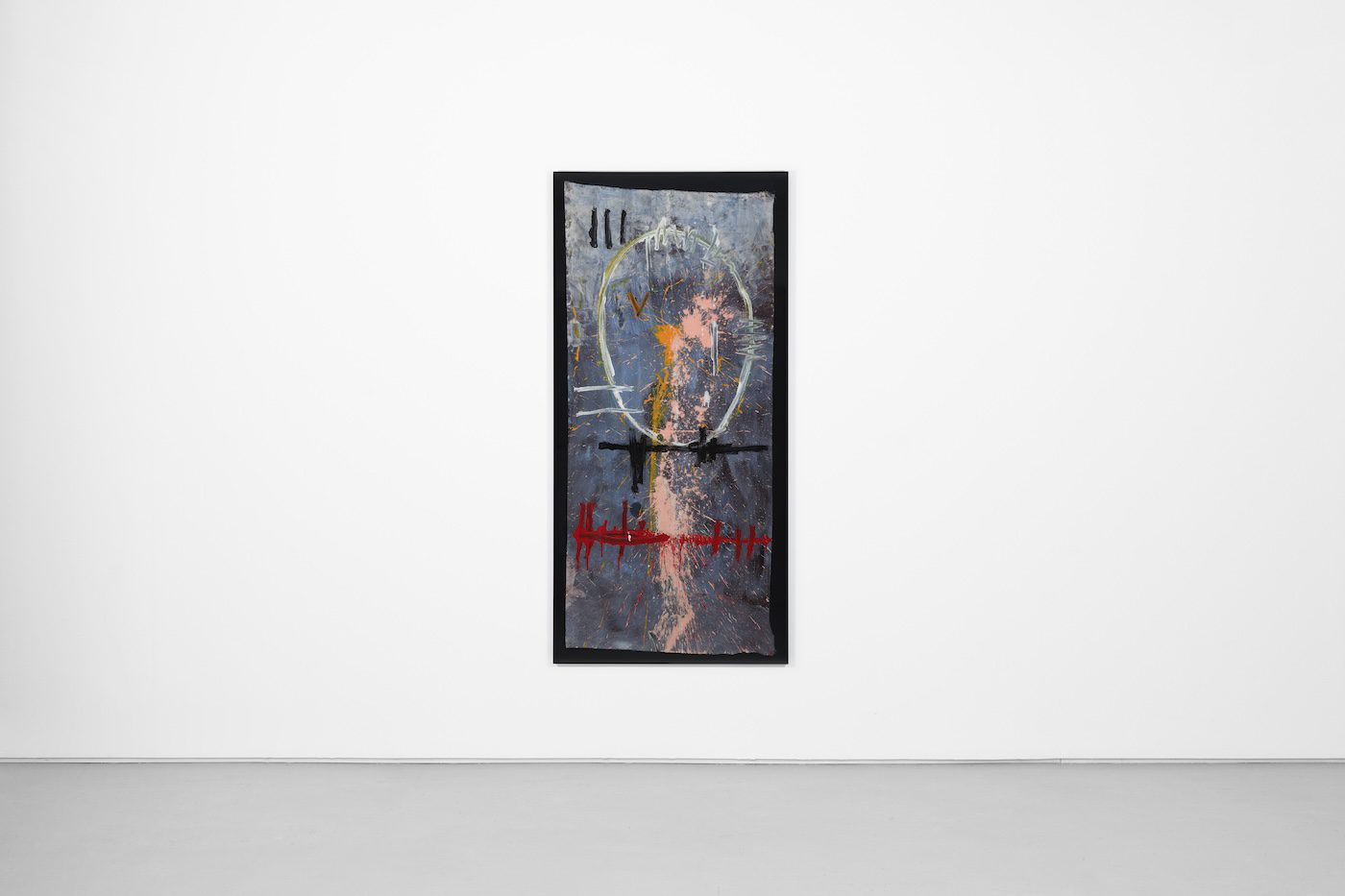
Samson Mnisi, Arreola II, XX, Mixed Media, 179.6 x 86 cm. Artworks © Samson Mnisi. Photo © Vela Projects (Mia Thom).
Rainmaker was the first solo exhibition of Mnisi’s work since he died in 2022. In an ironic twist of fate tied to the country’s colonial past, Plein Street is the name of both the street of Vela Projects and that of the studio across the country in Johannesburg where Mnisi passed away.
“His space is always a very spontaneous space where you can’t help but be alive with him,” Mnisi’s son and visual artist Refiloe Mnisi said in a panel discussion attached to the exhibition:
« There are no mistakes in that space, there is only being alive. Each and every piece of fabric he touches becomes life whether it was intentional or unintentional. Things can catch fire and you might think it was a mistake but that was an intentional expression of his. That leads him to multiple techniques and multiple textures, especially in this last series of works; he really was expressing an urgency of existence, an urgency of that balance. They might seem dark, but there’s actually this sense of light that breathes through it. »

Samson Mnisi, Messing with U II, XXX, Mixed Media, 175 x 138 cm . Artworks © Artist. Photo © Vela Projects (Mia Thom).
Refiloe was with his father in his studio when he passed away. Just hours prior, Mnisi had launched his first solo retrospective exhibition, Man of the Hour, across four venues in the prestigious Keyes Art Mile in Johannesburg’s leafy northern suburbs. At the launch, he had made art to the tune of bassist Banda Banda’s improvised plucking. Leading up to that moment in Samson Mnisi’s career was a life with a seemingly unstoppable momentum. His imminent death belonged to that same sequence of events that propelled Mnisi’s growing significance in the South African, and possibly global, art-historical canon.
“In many ways he was a cult figure,” art writer and Man of the Hour curator Ashraf Jamal said during the panel discussion. “But he was also a figure that never managed to succeed in and through his art. This is the tragedy: that he deserved so much more than he got. For me, his ability to maintain a sense of dignity in the midst of ignominy was for me the most profound thing.”

Samson Mnisi, Castle, XXX, Mixed Media, 163.5 x 126 cm. Artworks © Artist. Photo © Vela Projects (Mia Thom).
Samson Mnisi was born in the landlocked country of Lesotho on 4 April 1971 and lived most of his life in Johannesburg. His en caul birth, in which he appeared from the womb enwrapped by a still intact amniotic sac, bears spiritual significance in his culture: children born this way possess a spiritual gift or “light.” He was born into and learned from a lineage of healers called sangomas. African spirituality as most cultures practice it in southern Africa, includes a belief in the existence of multiple interdependent realms that we and other beings, including our ancestors, respectively occupy.
In 1992 Mnisi began his art tutelage at Johannesburg’s Federated Union of Black Artists (Fuba) School of Drama and Visual Arts, where abstract expressionist language interested him. The ritualistic spiritual practice he had learnt from his sangoma grandmothers found expression in his art practice. “I dig inside me,” the artist is quoted saying in the Rainmaker catalogue. “I find old pieces, ancient things, and then I bring them out to remind myself of who I was, who I have been, before I am what I am now.”
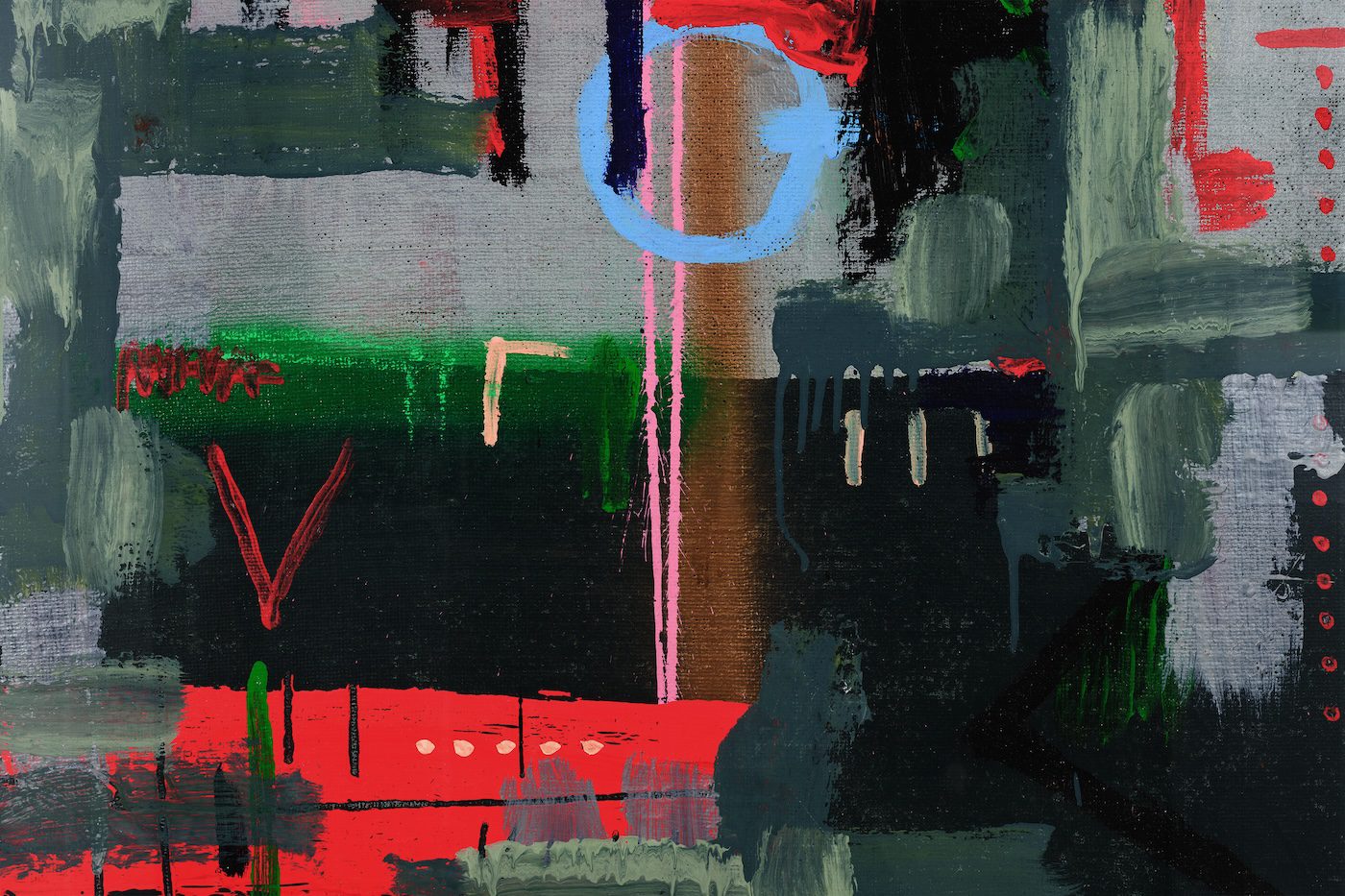
Samson Mnisi, Castle, XXX, Mixed Media, 163.5 x 126 cm. Detail. Artworks © Artist. Photo © Vela Projects (Mia Thom).
During his time at art school Mnisi met Zanele Mazibuko, who would become his wife and mother to their four children. “Samson was interested in me and I wasn’t,” Mazibuko said in a 2022 interview. “His mother and father had just gone through a divorce and it was hard living at his (family) home in White City, Soweto. Instead he lived somewhere in town, in different buildings. He was basically a street person but a very talented and intelligent artist.”
Mazibuko and Mnisi would live and work together for over two decades, making contributions to the South African cultural landscape across visual art, music, live events, film, and poetry. Their company, Blackagemedia, has project-managed and facilitated cultural events and cross- cultural exchanges that feature artists and institutions of the caliber of Hugh Masekela and New York’s Museum of Contemporary African Diaspora Art.
From 2005–07 they also owned the One Drop restaurant in the cosmopolitan Yeoville suburb of Johannesburg, where they helped launch the careers of musicians Sliq Angel, MXO, Pitch Black Afro, Martin Machapa, and others through a weekly open-mic session called Monday Blues. Mnisi produced songs with these artists as well as recording albums with vocalist Dorothy Masuku, her son Stanley Masuku, and South African poetry doyen Lesego Rampolokeng.
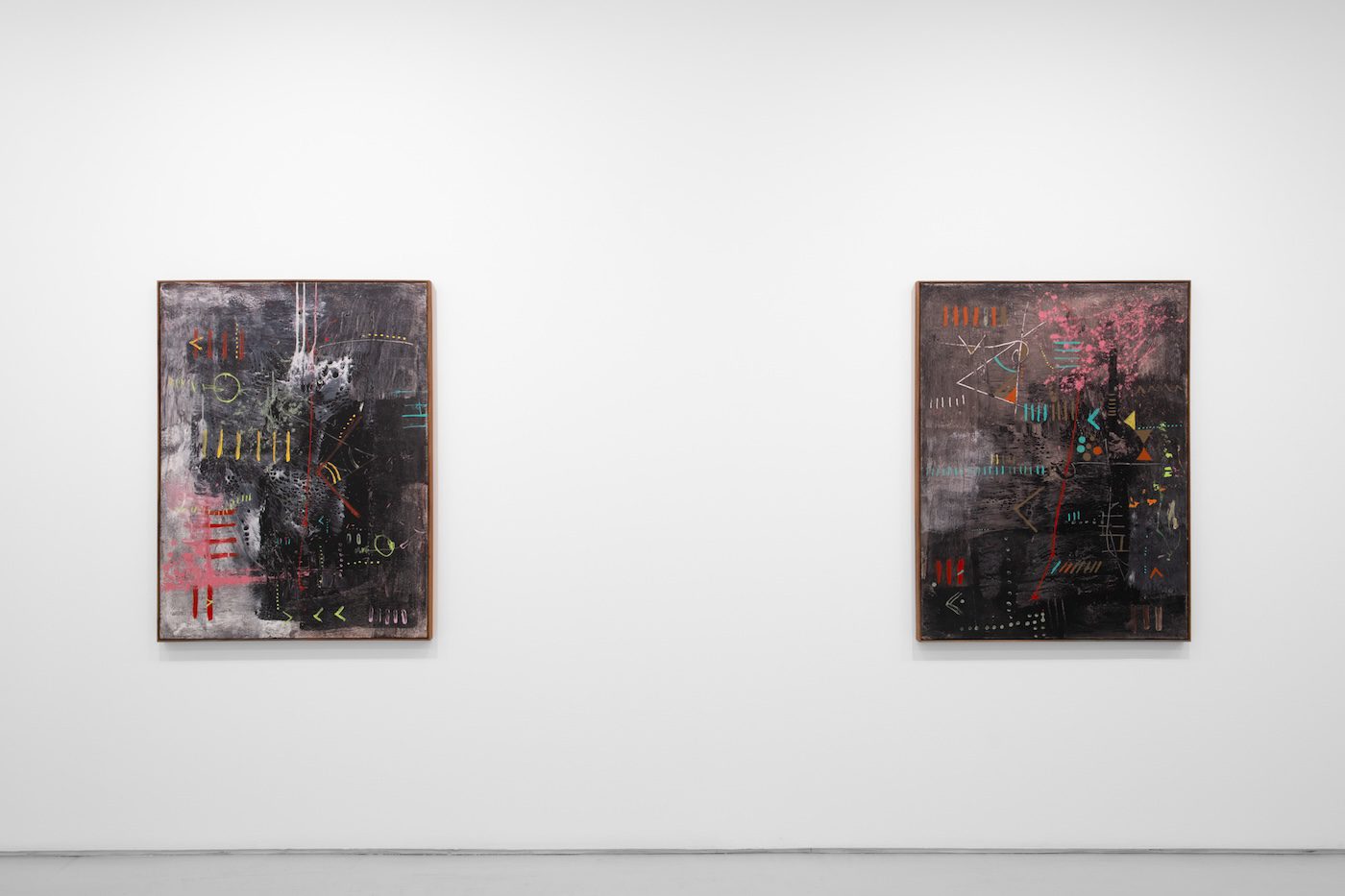
Samson Mnisi, Rainmaker, Installation view. Courtesy of Vela Projects.
Mnisi’s visual art practice included solo and group exhibitions in South Africa, the US, Réunion, and other countries. His years-long collaboration with US artist Cannon Hersey was notable and well-documented. But Jamal laments that leading up to Man of the Hour Mnisi’s paintings were “hawked at achingly poor prices while his persona proved well-nigh mythic,” a situation that stemmed from the frequent periods of abjection the artist experienced – “the man remained poised before an abyss.”
But Mnisi continued to create, in an ebb and flow of prolificacy that has left a body of work that interrogates the meaning of abstraction from the perspective of an African artistic and spiritual practice, enriching the global discourse. In the new book African Art: The ARAK Collection, Jamal considers abstraction a “provisional condition and state of being.”
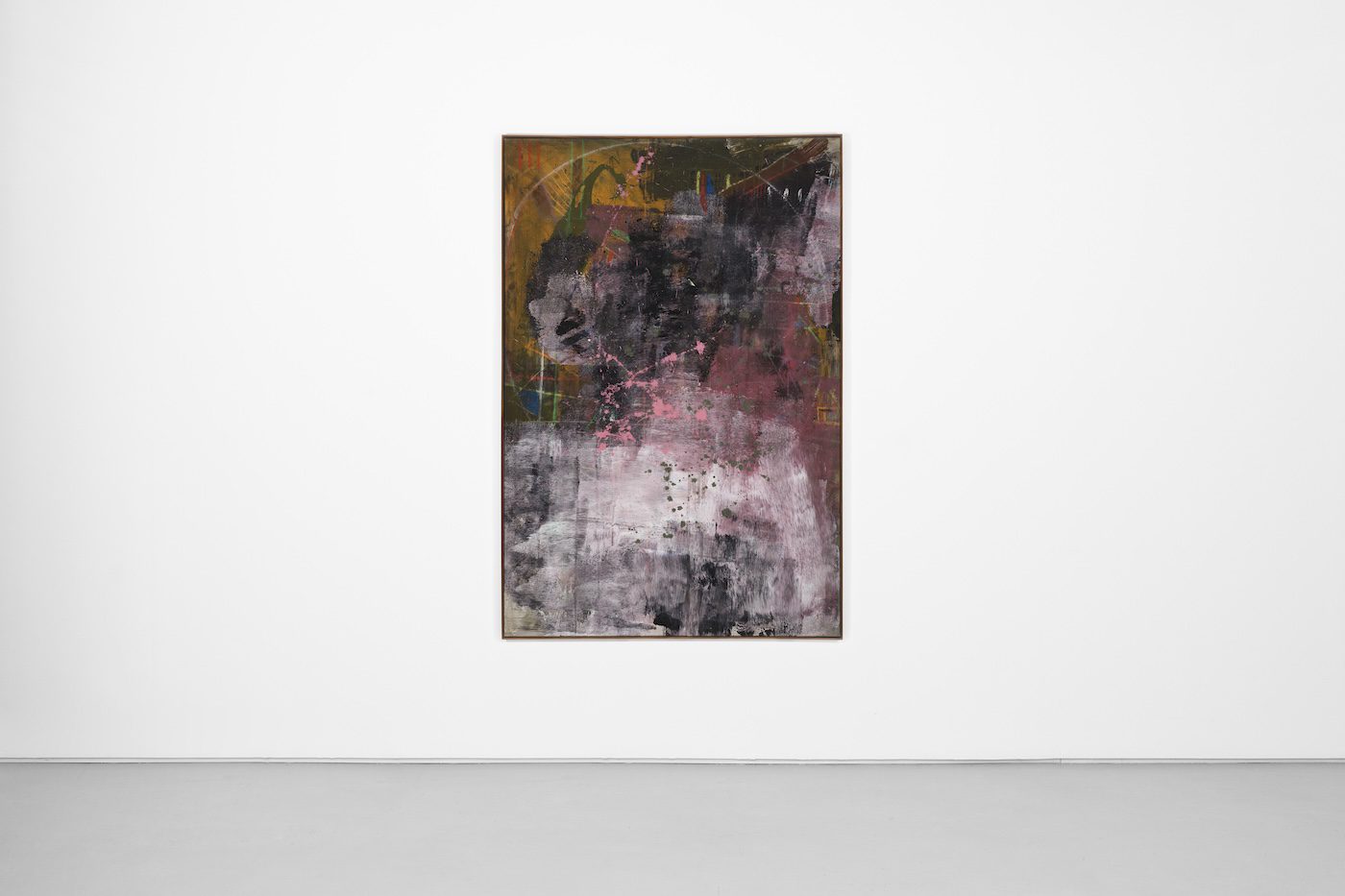
Samson Mnisi, Messing With U I, XX, Mixed Media, 174.5 x 117.5 cm . Artworks © Samson Mnisi. Photo © Vela Projects (Mia Thom).
« As for “African Abstraction,” it is a postulate conceived under erasure – legible, but by no means absolute, subject to being tossed aside. Or, in Clifford Geertz’s sense, a category that is neither comprehensive, uniform, primal or changeless. Its purpose, then, is little more than strategic, a different angling of perspective, or means whereby a diverse series of affects can be helmed by a singular moniker. »
This might apply in the context of the Qatar-based ARAK Collection, which includes abstract works by artists from various geographic, cultural, linguistic, and other contextual reaches of the African continent. But Mnisi’s abstraction is imbued with a spirituality uniquely southern African and dialectically different to the Christianity of the West and to Islam. Mnisi’s approach to mark-making might be understood as an expressionism which decenters the discrete object.
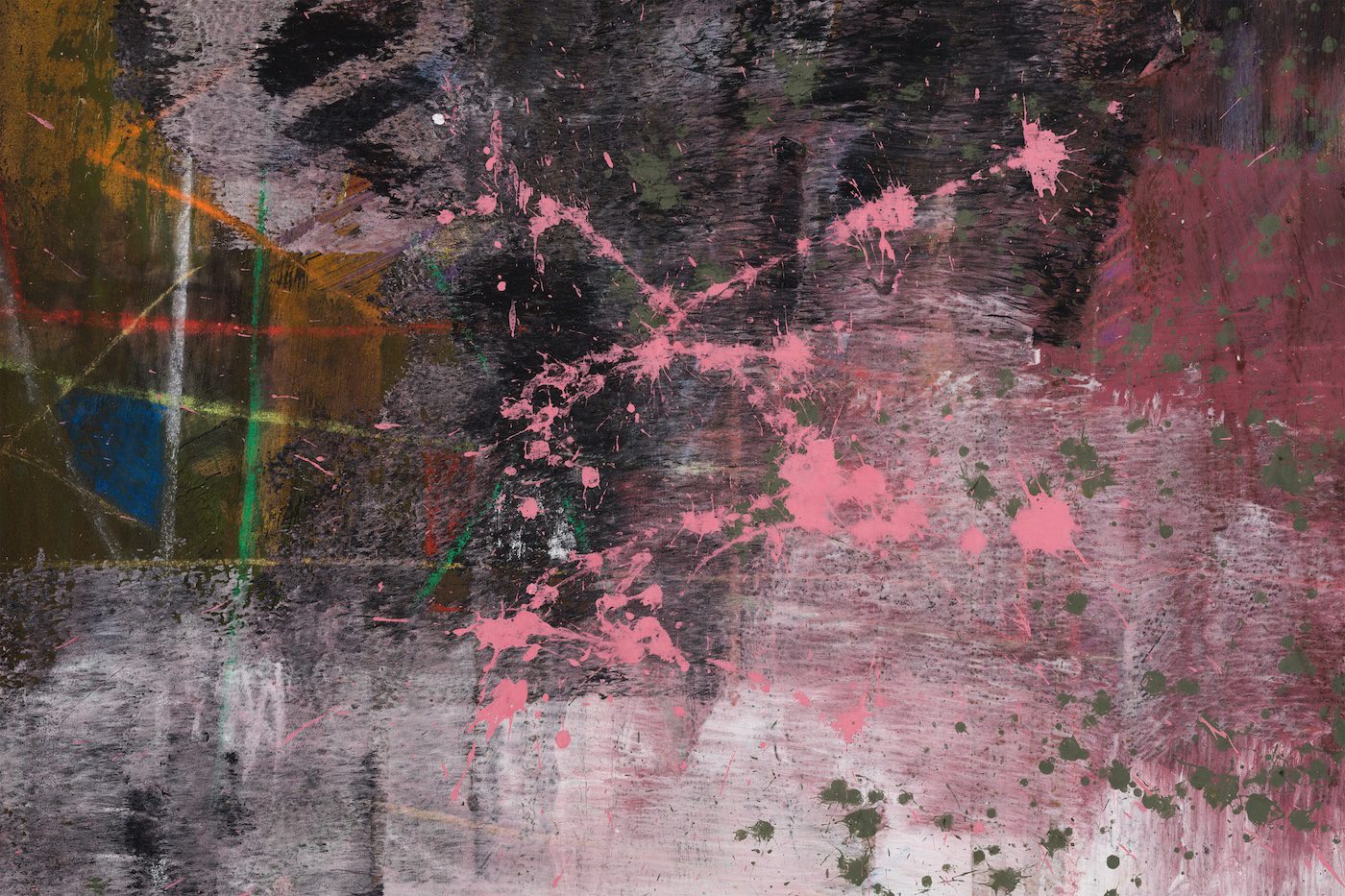
Samson Mnisi, Messing With U I, XXX, Mixed Media, 174.5 x 117.5 cm. Detail. Artworks © Artist. Photo © Vela Projects (Mia Thom).
Refiloe notes that Mnisi would frequently work simultaneously across several canvases, in a state of creative meditation that ventured beyond what might seem obviously logical. This suggests the possibility of a spiritual expressionism motivated by concerns other than the creation of objects conceived of within the parameters of how they are presented to the public, in which discreet artworks are separated after their creation. What Mnisi contributes conceptually might be in inviting the viewer to a place the artist has occupied, rather than pricking viewers’ senses to elicit premeditated responses.
Other South African artists with decades-long practices have also enjoyed renewed and expanded exposure to the art market through the efforts of a handful of star curators currently working in the country. Senzeni Marasela’s expansive retrospective Waiting for Gebane, curated by Koyo Kouoh at the Zeitz MOCAA, is another example. Borne on the waves of redress, this renewed interest is crashing against the bedrock of the art establishment. And in the case of Samson Mnisi, it affords us moorings from which to consider art from multiple African contexts.
As an independent writer, photographer, and videographer, Setumo-Thebe Mohlomi crafts stories from conception, through research and documentation, to publication and content marketing. He publishes frequently with reputable traditional and online publications and platforms.
HISTOIRES D'EXPOSITIONS
C&’s second book "All that it holds. Tout ce qu’elle renferme. Tudo o que ela abarca. Todo lo que ella alberga." is a curated selection of texts representing a plurality of voices on contemporary art from Africa and the global diaspora.
More Editorial